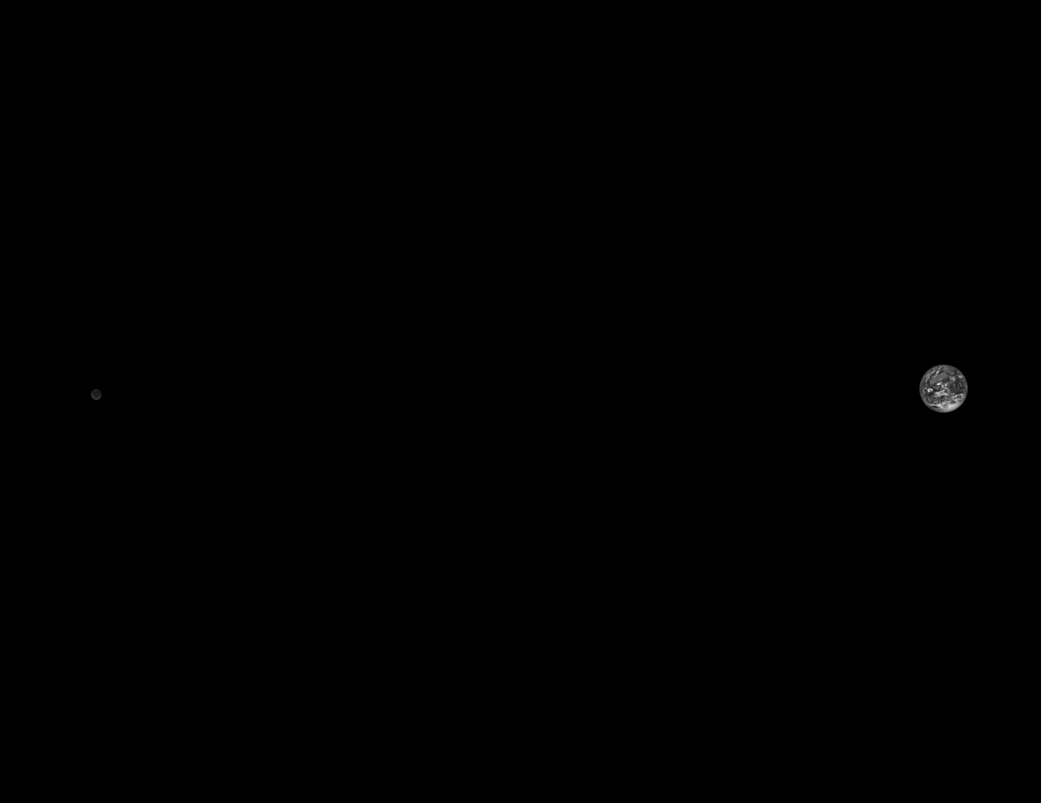露西发现了地球和月球
On Oct. 13, 2022, NASA’s Lucy spacecraft captured this image of the Earth and the Moon from 890,000 miles (1.4 million km) away. The image was taken as part of an instrument calibration sequence as the spacecraft approached Earth for its first of three Earth gravity assists. These Earth flybys provide Lucy with the speed required to reach the Trojan asteroids — small bodies that orbit the Sun at the same distance as Jupiter. On its 12-year journey, Lucy will fly by a record-breaking number of asteroids and survey their diversity, looking for clues to better understand the formation of the solar system.
The image was taken with Lucy’s Terminal Tracking Camera (T2CAM) system, a pair of identical cameras that are responsible for tracking the asteroids during Lucy’s high-speed encounters. The T2CAM system was designed, built, and tested by Malin Space Science Systems; Lockheed Martin Integrated the T2CAMs onto the Lucy spacecraft and operates them.
Image Credit: NASA/Goddard/SwRI
2022年10月13日,NASA的露西号航天器从89万英里(140万公里)外拍摄了这张地球和月球的图像。这张图片是在航天器接近地球进行三次地球重力辅助中的第一次时,作为仪器校准序列的一部分拍摄。这些飞掠地球的行动为露西提供了到达特洛伊小行星所需的速度–这些小行星围绕太阳运行的距离与木星相同。在其12年的旅程中,露西号将飞掠创纪录数量的小行星,并调查它们的多样性,寻找线索以更好地了解太阳系的形成。
这张照片是用露西号的终端跟踪相机(T2CAM)系统拍摄,这是一对相同的相机,负责在露西号高速相遇小行星期间跟踪小行星。T2CAM系统由马林太空科学系统公司设计、建造和测试;洛克希德·马丁公司将T2CAM集成到露西号航天器上并对其进行操作。
影像来源:NASA/Goddard/SwRI

